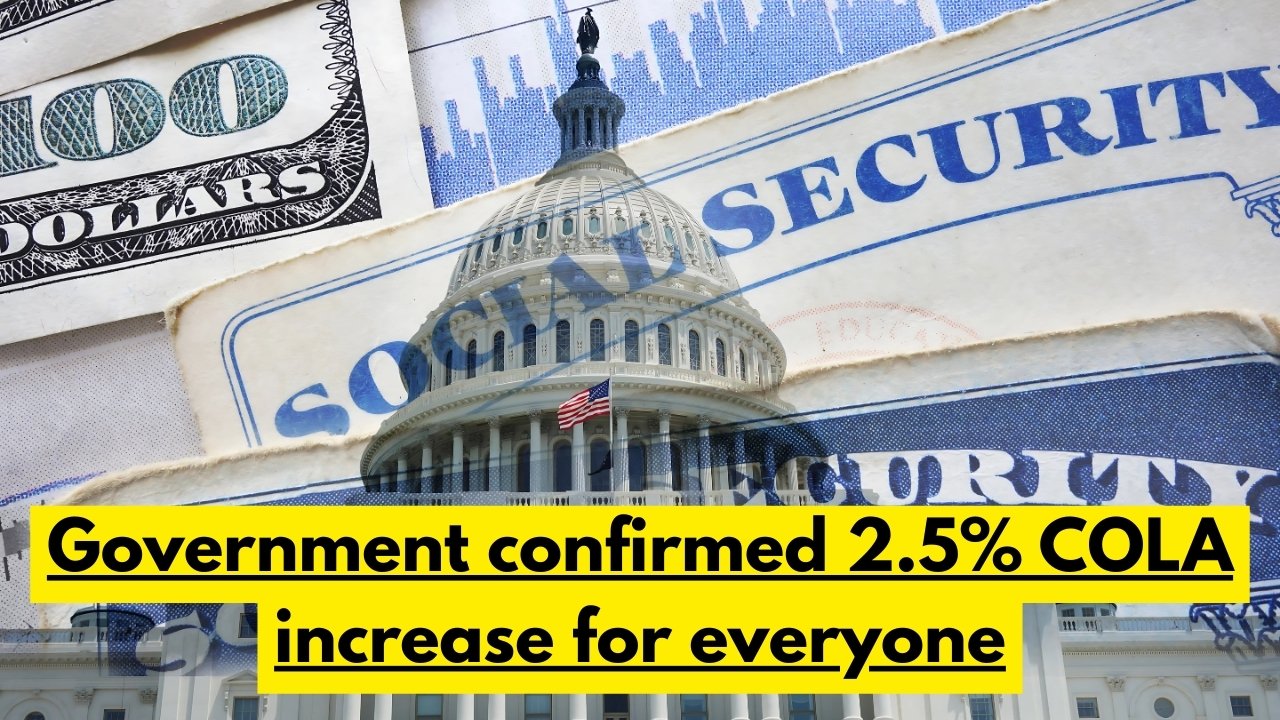2.5% COLA increase : Social Security recipients woke up to fatter bank accounts this January as the government’s 2.5 percent cost-of-living adjustment kicked in nationwide. The increase affects not just retirees but disability recipients, survivors, and even federal employees, marking the first coordinated benefit raise since inflation began cooling from its recent peaks.
This adjustment touches more Americans than any other federal program change. From the retired factory worker in Detroit to the disabled veteran in Phoenix, checks increased automatically without anyone filing paperwork or visiting government offices. The typical retiree sees about $49 more monthly, while couples collecting benefits together gain roughly $75 combined.
Behind these numbers lies a complex calculation tied to consumer prices. Government economists track everything from gasoline to ground beef, measuring how inflation eats away at purchasing power. When prices rise, benefits follow – though usually several months behind actual cost increases.
More Than Just Social Security
While Social Security grabs headlines, this 2.5 percent boost extends far beyond retirement checks. Federal employees under the old Civil Service Retirement System see identical increases. Military retirees and survivors receiving dependency compensation get the same percentage bump. Even Supplemental Security Income, supporting the poorest elderly and disabled Americans, rises by the same rate.
Veterans receiving disability compensation particularly benefit from compound effects. A veteran rated 100 percent disabled with dependents might see their monthly check jump by over $80. Railroad retirement tier one benefits, which mirror Social Security, also increased proportionally.

The timing couldn’t be better for federal retirees still recovering from years of elevated inflation. Though 2.5 percent seems modest compared to 2023’s 8.7 percent adjustment, it arrives when most household budgets have stabilized. Grocery prices stopped their wild climb, gasoline costs moderated, and even insurance premiums increased less dramatically than previous years.
What This Means for Your Budget
Real-world impact varies considerably based on individual circumstances. Someone receiving the maximum Social Security benefit of $4,018 monthly gains over $100, while minimum benefit recipients might see just $20 more. The difference reflects lifetime earnings disparities carrying into retirement.
Medicare Part B premiums complicate the picture. These rose to $185 monthly, eating roughly $10 of the average person’s increase. Prescription drug plans also adjusted rates upward, further eroding gains. Some retirees discover their net increase barely covers one restaurant meal monthly.
Still, every dollar matters when living on fixed income. That extra $49 might mean keeping the thermostat slightly warmer this winter or affording brand-name medications instead of generics. For couples combining two Social Security checks with pension income, the adjustment could total $150 or more monthly.
The Automatic Process Works Smoothly
Nobody needs to apply for this increase – it happens automatically. Direct deposit recipients saw larger payments beginning December 31 for SSI and early January for Social Security. Paper check recipients waited a few extra days for mail delivery, but everyone eligible received their adjustment.
The seamless implementation reflects decades of system refinements. Computer systems automatically recalculate millions of benefits overnight, adjusting for individual circumstances like age, earnings history, and family status. Even complex cases involving multiple benefit types or international residents processed without hiccups.
60 VA Disability Pay finally increase are confirm – Check how to claim?
2.5% COLA increase Looking Ahead to Future Adjustments
Economic forecasters predict similar modest increases moving forward. Inflation appears controlled, suggesting 2026’s adjustment might range between 2.5 and 3 percent. That’s good news for the federal budget but potentially challenging for seniors facing healthcare costs rising faster than general inflation.
The 2.5 percent increase represents a return to historical norms after several years of extreme adjustments. It signals economic stability while providing essential protection against gradual price increases affecting everyone’s daily life.
